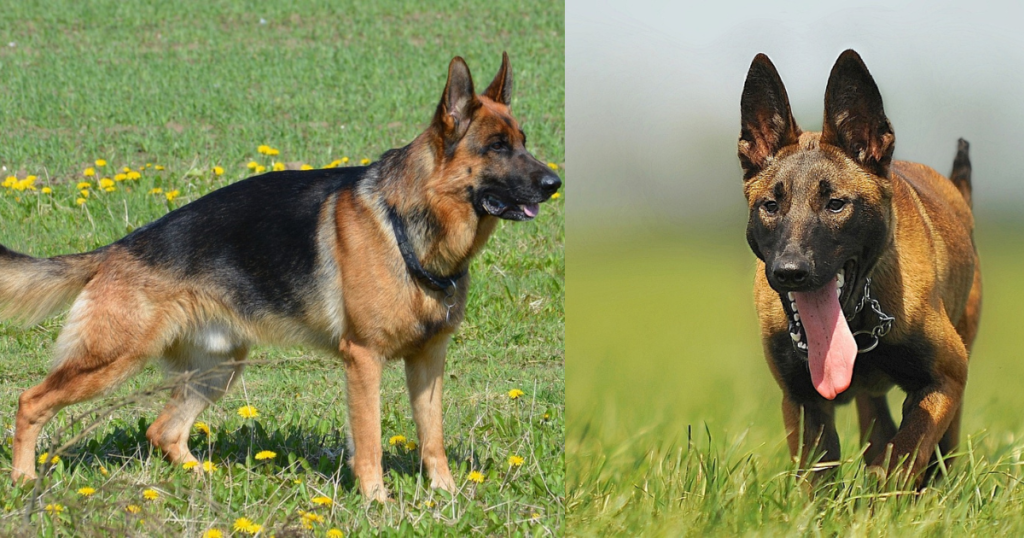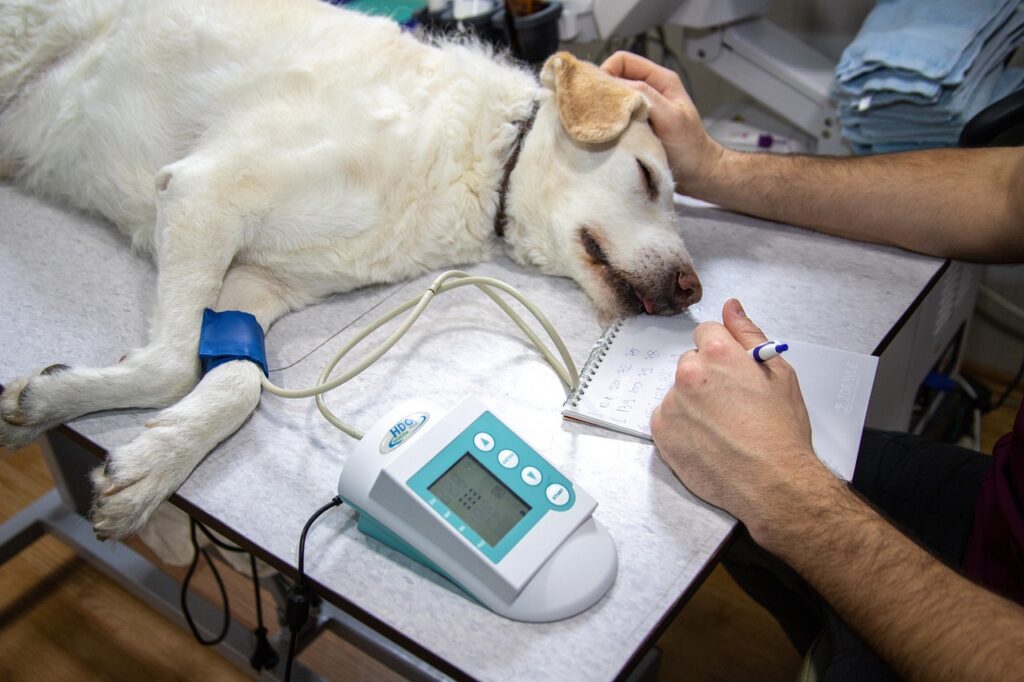When comparing a German Shepherd vs Malinois, potential dog owners face a challenging decision between two exceptional working breeds. However, both breeds offer unique qualities and are excellent choices for the right person. Are you torn between getting a German Shepherd or a Malinois? You’re not alone! These two incredible breeds share many similarities, but they also have distinct characteristics that set them apart. In this comprehensive guide, we’ll dive deep into the world of these exceptional working dogs to help you make the best choice for your lifestyle and needs.
German Shepherd vs Malinois: Understanding the Breeds’ History
Before we delve into the nitty-gritty details of the German Shepherd vs Malinois comparison, let’s take a quick look at the origins of these two remarkable breeds.
German Shepherd: The Versatile Protector
The German Shepherd breed was developed in Germany in the late 19th century by Captain Max von Stephanitz. His goal was to create the perfect working dog, and boy, did he succeed! Originally bred for herding sheep, German Shepherds quickly proved their worth in various roles, from police and military work to search and rescue operations.
Malinois: The Tireless Worker
The Malinois, also known as the Belgian Malinois, hails from Belgium. This breed is one of four varieties of Belgian Shepherd Dogs and was initially bred for herding and guarding livestock. Known for their incredible work ethic and versatility, Malinois have become increasingly popular in recent years, especially in law enforcement and military circles.
Comparing German Shepherd and Malinois Physical Characteristics
When it comes to appearance, both breeds exude strength and athleticism. However, there are some notable differences that might influence your decision in the German Shepherd vs Malinois debate.
German Shepherd: The Classic Canine
German Shepherds are well-known for their distinctive look In contrast, Belgian Malinois have a more streamlined appearance:
- Size: Males typically stand 24-26 inches tall and weigh 65-90 pounds, while females are slightly smaller at 22-24 inches and 50-70 pounds.
- Coat: They have a dense double coat that comes in various colors, with the classic black and tan being the most recognizable.
- Body Structure: German Shepherds have a strong, muscular build with a sloping back (though this is less pronounced in working lines).
Malinois: The Lean Machine
Malinois have a more streamlined appearance:
- Size: Males stand 24-26 inches tall and weigh 60-80 pounds, with females at 22-24 inches and 40-60 pounds.
- Coat: They have a short, straight coat that’s typically fawn to mahogany in color with a black mask.
- Body Structure: Malinois are leaner and more agile-looking than German Shepherds, with a square body profile.
German Shepherd vs Malinois Temperament: Living with These Breeds
Both breeds are known for their intelligence, loyalty, and protective instincts. However, their energy levels and specific personality traits can differ significantly in the German Shepherd vs Malinois comparison.
German Shepherd: The Steady Guardian
German Shepherds are often described as:
- Confident and Courageous: They’re not easily fazed and make excellent guard dogs.
- Loyal and Devoted: They form strong bonds with their families and are especially good with children when properly socialized.
- Intelligent and Trainable: German Shepherds excel in obedience and are eager to please their owners.
- Moderately Energetic: While they need regular exercise, they also have an “off switch” and can relax at home.
Malinois: The Energizer Bunny of Dogs
Malinois are known for:
- High Energy and Drive: They have an almost inexhaustible work ethic and need constant mental and physical stimulation.
- Intense Focus: Malinois are incredibly focused on their tasks and handlers, sometimes to the point of being single-minded.
- Intelligence and Trainability: Like German Shepherds, they’re highly intelligent and excel in various training scenarios.
- Sensitivity: They can be more sensitive to correction than German Shepherds and may require a more nuanced training approach.
Exercise Needs: German Shepherd vs Malinois Comparison
Both breeds require significant exercise, but the amount and intensity can vary when comparing a German Shepherd vs Malinois.
German Shepherd Exercise Requirements
German Shepherds need:
- At least 1-2 hours of exercise daily
- A mix of physical activities (walks, runs, fetch) and mental stimulation (training, puzzle toys)
- Access to a securely fenced yard is ideal but not absolutely necessary if you’re committed to regular outings
Malinois Exercise Requirements
Malinois have more intense exercise needs:
- 2+ hours of vigorous exercise daily
- High-intensity activities like agility, flyball, or advanced obedience training
- A job or purpose to focus their energy (even if it’s just extensive training sessions)
- Access to a large, securely fenced area is highly recommended
Training a German Shepherd vs Malinois: Key Differences
Both breeds are highly trainable, but their specific traits can influence the training process. Understanding these differences is crucial in the German Shepherd vs Malinois decision.
Training a German Shepherd
When training a German Shepherd:
- Start early and be consistent
- Use positive reinforcement techniques
- Focus on obedience and socialization from puppyhood
- Provide mental stimulation through problem-solving games and tasks
- Be prepared for a potentially stubborn streak during adolescence
Training a Malinois
Training a Malinois requires:
- A firm, confident handler who can provide clear leadership
- Early and extensive socialization to prevent overprotectiveness
- Consistent, positive reinforcement-based methods
- Plenty of mental and physical challenges to prevent boredom and destructive behavior
- A focus on impulse control and calm behavior in addition to active training
Health Concerns: Keeping Your Furry Friend in Top Shape
Like all breeds, German Shepherds and Belgian Malinois have their share of potential health issues. Being aware of these can help you make an informed decision and provide the best care for your future pet.
Common Health Issues in German Shepherds
German Shepherds may be prone to:
- Hip and Elbow Dysplasia: Joint malformations that can lead to arthritis and mobility issues.
- Bloat (Gastric Dilatation-Volvulus): A life-threatening condition where the stomach fills with gas and twists on itself.
- Degenerative Myelopathy: A progressive spinal cord disease that can lead to paralysis.
- Exocrine Pancreatic Insufficiency: A digestive disorder where the pancreas doesn’t produce enough enzymes.
Common Health Issues in Belgian Malinois
Belgian Malinois may be susceptible to:
- Hip and Elbow Dysplasia: Similar to German Shepherds, but generally less prevalent.
- Progressive Retinal Atrophy: An eye condition that can lead to blindness.
- Thyroid Issues: Can affect metabolism and overall health.
- Epilepsy: A neurological disorder causing seizures.
Regular vet check-ups, a balanced diet, and proper exercise can help mitigate many of these health risks for both breeds.
Grooming Needs: Keeping Your Dog Looking Sharp
Grooming requirements can be a significant factor in choosing between these breeds, especially if you’re not a fan of dog hair on your furniture!
Grooming a German Shepherd
German Shepherds have a thick double coat that requires:
- Regular brushing (2-3 times a week, daily during shedding seasons)
- Occasional baths (every 3-4 months or when dirty)
- Nail trimming and ear cleaning as needed
- Professional grooming is optional but can be helpful during heavy shedding periods
Grooming a Belgian Malinois
Belgian Malinois have a shorter coat that’s easier to maintain:
- Weekly brushing is usually sufficient
- Baths only when necessary (they’re generally clean dogs)
- Regular nail trimming and ear cleaning
- Professional grooming is rarely needed
Living Situation: Finding the Right Fit
Your living situation plays a crucial role in determining which breed might be better suited for you.
German Shepherds in Various Living Situations
German Shepherds can adapt to different living environments:
- They can do well in houses with yards or larger apartments
- Suburban or rural settings are ideal, but they can adapt to urban life with sufficient exercise
- They’re generally good with children and can be excellent family dogs
- They may not be the best choice for homes with cats or small pets due to their prey drive
Belgian Malinois in Various Living Situations
Belgian Malinois have more specific needs:
- They do best in homes with large, securely fenced yards
- Rural or suburban settings are ideal; urban living can be challenging
- They may be too intense for families with young children or elderly members
- Their high prey drive makes them unsuitable for homes with cats or small pets
Cost Considerations: Budgeting for Your New Best Friend
When choosing between these breeds, it’s important to consider both the initial costs and ongoing expenses.
Costs Associated with German Shepherds
- Initial Cost: $500-$2000 from a reputable breeder
- Food: $50-$80 per month for high-quality dog food
- Veterinary Care: $500-$1000 per year for routine care and preventative treatments
- Training: $100-$300 for basic obedience classes, more for specialized training
Costs Associated with Belgian Malinois
- Initial Cost: $1000-$2500 from a reputable breeder
- Food: $50-$80 per month for high-quality dog food
- Veterinary Care: $500-$1000 per year for routine care and preventative treatments
- Training: $200-$500 for basic obedience, potentially more for the specialized training they often require
Remember, these are rough estimates, and costs can vary depending on your location and specific circumstances.
Making the Decision: Which Breed is Right for You?
After considering all these factors, how do you make the final decision? Here are some key points to consider:
- Energy Level: If you’re extremely active and looking for a high-energy companion, the Belgian Malinois might be the better choice. If you prefer a dog with a more moderate energy level, lean towards the German Shepherd.
- Training Commitment: Both breeds require significant training, but Belgian Malinois generally need more intense and ongoing training throughout their lives.
- Living Space: German Shepherds are more adaptable to various living situations, while Belgian Malinois really thrive in homes with large, secure outdoor spaces.
- Family Situation: German Shepherds are often better suited for families with children, while Belgian Malinois might be better for adult-only households or families with older children.
- Experience Level: While neither breed is recommended for first-time dog owners, German Shepherds are generally more forgiving of novice mistakes than the more intense Belgian Malinois.
Conclusion: Your Perfect Canine Companion Awaits
In conclusion Choosing between a German Shepherd vs Malinois is no easy task. Therefore, it’s essential to carefully consider your lifestyle, living situation, and what you’re looking for in a canine companion. Both breeds offer incredible loyalty, intelligence, and versatility. Your final decision should be based on a careful evaluation of your lifestyle, living situation, and what you’re looking for in a canine companion.
Remember, regardless of which breed you choose in the German Shepherd vs Malinois debate, the key to a happy and healthy dog lies in proper training, socialization, exercise, and lots of love. When you’re ready to bring your new furry friend home, be sure to choose a reputable breeder or consider adoption from a breed-specific rescue.
Whichever breed you choose, you’re in for an adventure filled with love, loyalty, and maybe a bit of dog hair. Happy dog parenting!



